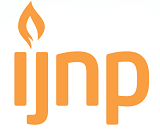Effects of Mother's Voice Recording Toward Premature Infant Heart Rate Changes at the Rsud Dr. Moewardi
Abstract
Background: The World Health Organization (WHO) states that premature birth occurs before 37 weeks of complete pregnancy and is a leading cause of death of newborns. As for interventions that could be done to improve this, includes listening to the mother's voice and lullabies (lullaby). Mother's voice can affect respiration rate, heart rate, oxygen saturation, infant’s oral feeding skill, premature infant weight gain, brain maturation, and the infant’s physical response.
Objective: The purpose of this research was to find the effect of mother's voice recordings on the state of the heart rate of premature babies in the HCU Neonatal Room of RSUD Dr. Moewardi. This study was completed in the neonatal HCU room of RSUD Dr. Moewardi.
Method: The sampling technique used is consecutive sampling method, based on inclusion and exclusion criteria. This study uses a quasi-experimental design with a pre and post-test design without control group. The analysis test used was paired t-test since the normality test results showed p values of >0.05 (normal distribution).
Result: The results of the Paired T-Test showed a p-value of 0,000 (p<0.05) which means, there is significant difference in heart rate between before and after the application of the mother's voice recording.
Conclusion: In conclusion Mother's voice recording influences changes in the heart rate of premature babies. The implications of the mother's voice recording can be used for the treatment of premature infants in the HCU Neonatal room and NICU.
Keywords
Full Text:
PDFReferences
Ahmadi Vastani, M., Zahedpasha, Y., Jafarian Amiri, S. R., Khafri, S., & Farhadi, R. (2016). The Effect of Experience on Recognition of Mother’s Voice in Preterm Infants. Nursing and Midwifery Studies, inpress(inpress). https://doi.org/10.17795/nmsjournal40964
Carvalho, M. E. S., Justo, J. M. R. M., Gratier, M., Tomé, T., Pereira, E., & Rodrigues, H. (2019). Vocal responsiveness of preterm infants to maternal infant-directed speaking and singing during skin-to-skin contact (Kangaroo Care) in the NICU. Infant Behavior and Development, 57(January), 101332. https://doi.org/10.1016/j.infbeh.2019.101332
Chorna, O. D., Slaughter, J. C., Wang, L., Stark, A. R., & Maitre, N. L. (2014). A pacifier-activated music player with mother’s voice improves oral feeding in preterm infants. Pediatrics, 133(3), 462–468. https://doi.org/10.1542/peds.2013-2547
Dharma, K. K. (2011). Metodologi Penelitian Keperawatan: Panduan Melaksanakan dan Menerapkan Hasil Penelitian. Trans Info Media.
Fancourt, D., & Perkins, R. (2018). The effects of mother–infant singing on emotional closeness, affect, anxiety, and stress hormones. Music & Science, 1, 205920431774574. https://doi.org/10.1177/2059204317745746
Filippa, M., Monaci, M. G., & Grandjean, D. (2019). Emotion Attribution in Nonverbal Vocal Communication Directed to Preterm Infants. Journal of Nonverbal Behavior, 43(1), 91–104. https://doi.org/10.1007/s10919-018-0288-1
Jabraeili, M., Sabet, T., MustafaGharebaghi, M., Asghari Jafarabadi, M., & Arshadi, M. (2016). The Effect of Recorded Mum’s Lullaby and Brahm’s Lullaby on Oxygen Saturation in Preterm Infants: a Randomized Double-Blind Clinical Trial. Journal of Caring Sciences, 5(1), 85–93. https://doi.org/10.15171/jcs.2016.009
Kementrian kesehatan RI. (2019). Indonesia Health Profile 2018. In Profil Kesehatan Provinsi Bali.
Kisilevsky, B. S., Hains, S. M. J., Brown, C. A., Lee, C. T., Cowperthwaite, B., Stutzman, S. S., Swansburg, M. L., Lee, K., Xie, X., Huang, H., Ye, H. H., Zhang, K., & Wang, Z. (2009). Fetal sensitivity to properties of maternal speech and language. Infant Behavior and Development, 32(1), 59–71. https://doi.org/10.1016/j.infbeh.2008.10.002
Krueger, C. (2010). Exposure to maternal voice in preterm infants: A review. Advances in Neonatal Care, 10(1), 13–18. https://doi.org/10.1097/ANC.0b013e3181cc3c69
Nocker-Ribaupierre, M., Linderkamp, O., & Riegel, K. P. (2015). The effects of mothers’ voice on the long term development of premature infants: A prospective randomized study. Music and Medicine, 7(3), 20–25. http://ovidsp.ovid.com/ovidweb.cgi?T=JS&PAGE=reference&D=psyc11&NEWS=N&AN=2015-42993-004
Picciolini, O., Porro, M., Meazza, A., Giannì, M. L., Rivoli, C., Lucco, G., Barretta, F., Bonzini, M., & Mosca, F. (2014). Early exposure to maternal voice: Effects on preterm infants development. Early Human Development, 90(6), 287–292. https://doi.org/10.1016/j.earlhumdev.2014.03.003
Rand, K., & Lahav, A. (2014). Maternal sounds elicit lower heart rate in preterm newborns in the first month of life. Early Human Development, 90(10), 679–683. https://doi.org/10.1016/j.earlhumdev.2014.07.016
Sajjadian, N., Mohammadzadeh, M., Alizadeh Taheri, P., & Shariat, M. (2017). Positive effects of low intensity recorded maternal voice on physiologic reactions in premature infants. Infant Behavior and Development, 46, 59–66. https://doi.org/10.1016/j.infbeh.2016.11.009
Uchida, M. O., Arimitsu, T., Yatabe, K., Ikeda, K., Takahashi, T., & Minagawa, Y. (2018). Effect of mother’s voice on neonatal respiratory activity and EEG delta amplitude. Developmental Psychobiology, 60(2), 140–149. https://doi.org/10.1002/dev.21596
Webb, A. R., Heller, H. T., Benson, C. B., & Lahav, A. (2015). Mother’s voice and heartbeat sounds elicit auditory plasticity in the human brain before full gestation. Proceedings of the National Academy of Sciences of the United States of America, 112(10), 3152–3157. https://doi.org/10.1073/pnas.1414924112
WHO. (2017). Infant mortality : Situation and trends. https://www.who.int/gho/child_health/mortality/neonatal_infant_text/en/
WHO. (2018). Preterm Birth. https://www.who.int/en/news-room/fact-sheets/detail/preterm-birth
DOI: https://doi.org/10.18196/ijnp.v4i2.8645
Refbacks
- There are currently no refbacks.

This work is licensed under a Creative Commons Attribution 4.0 International License.
IJNP (Indonesian Journal of Nursing Practices) are indexed by:
Office:
School of Nursing, Faculty of Medicine and Health Science, Universitas Muhammadiyah YogyakartaSiti Walidah Building F3, 4th floor.
JL. Brawijaya, Tamantirto, Kasihan, Bantul, Yogyakarta 55183
Email: IJNP@umy.ac.id
Web: http://journal.umy.ac.id/index.php/ijnp

Indonesian Journal of Nursing Practice is licensed under an Attribution 4.0 International (CC BY 4.0) license.



















.png)
